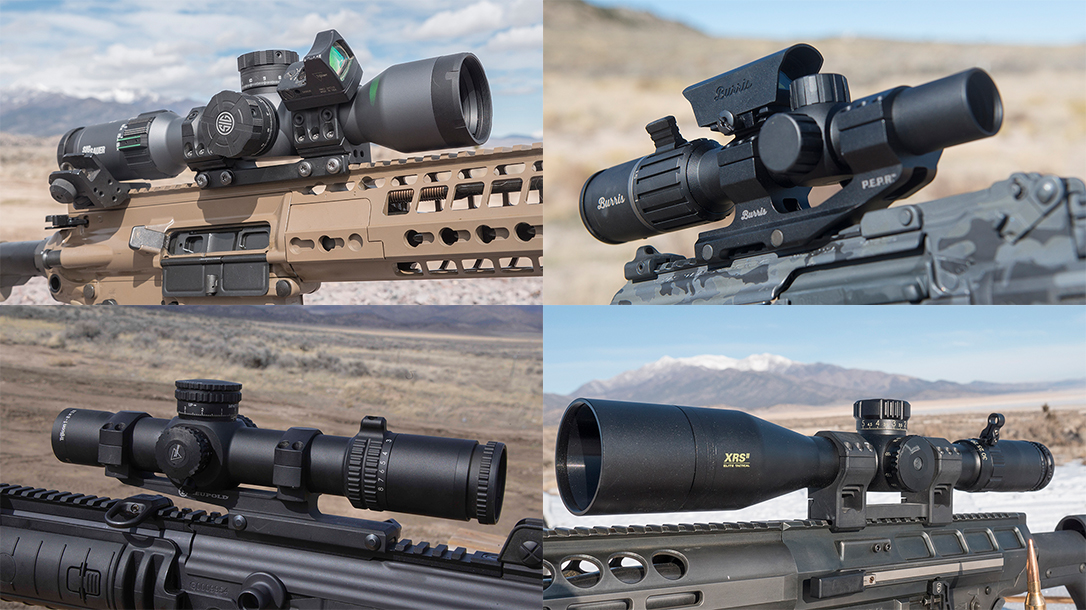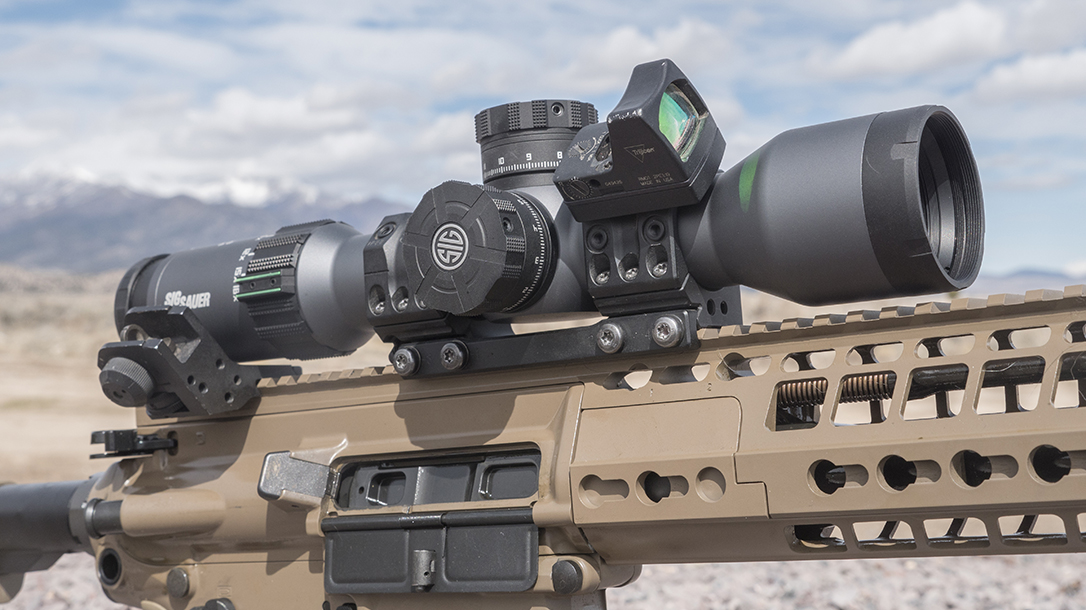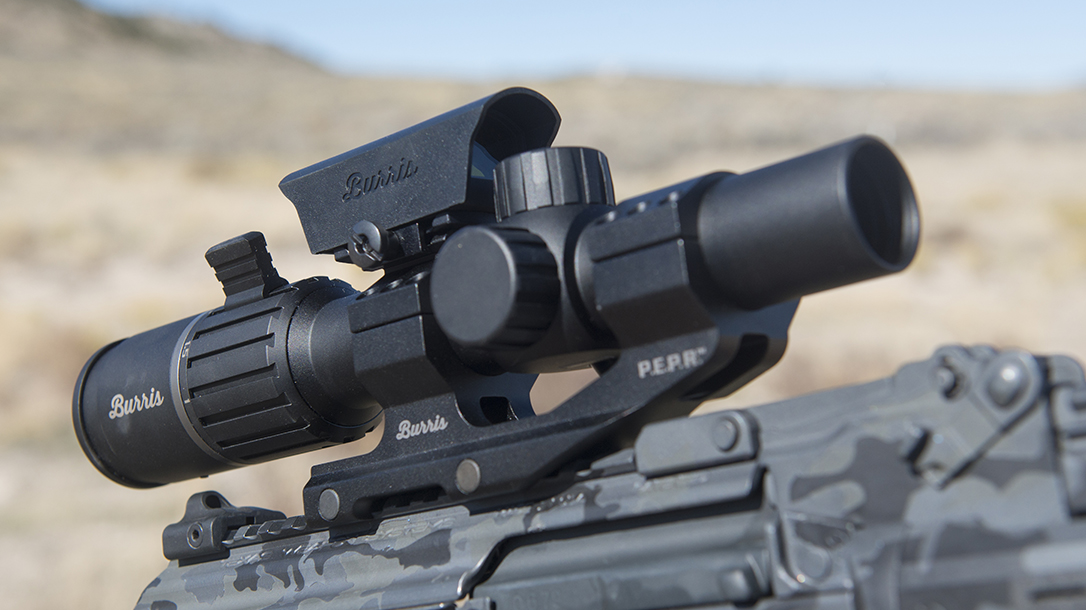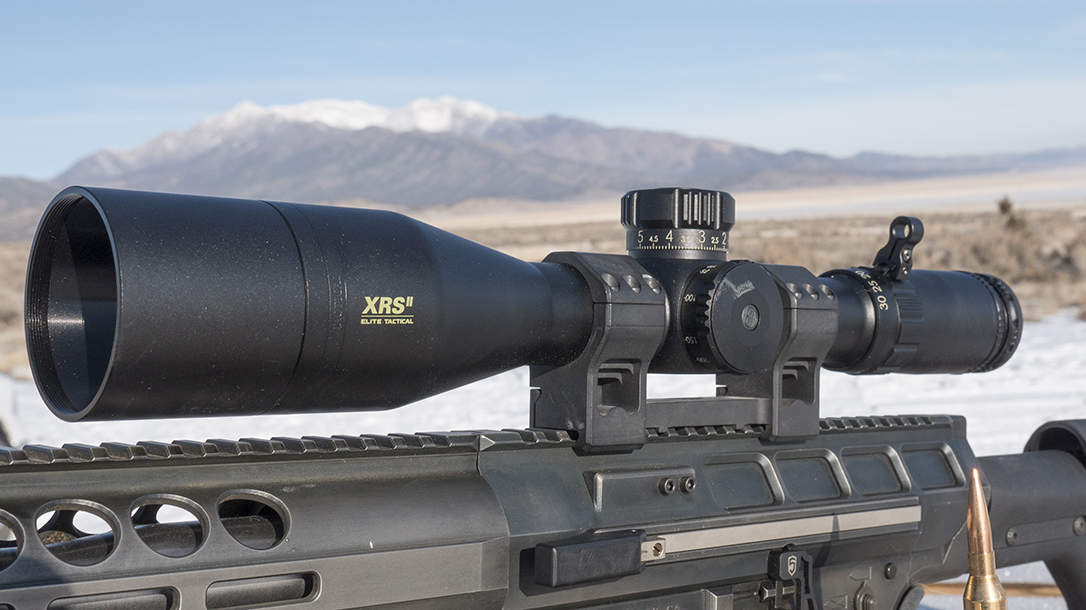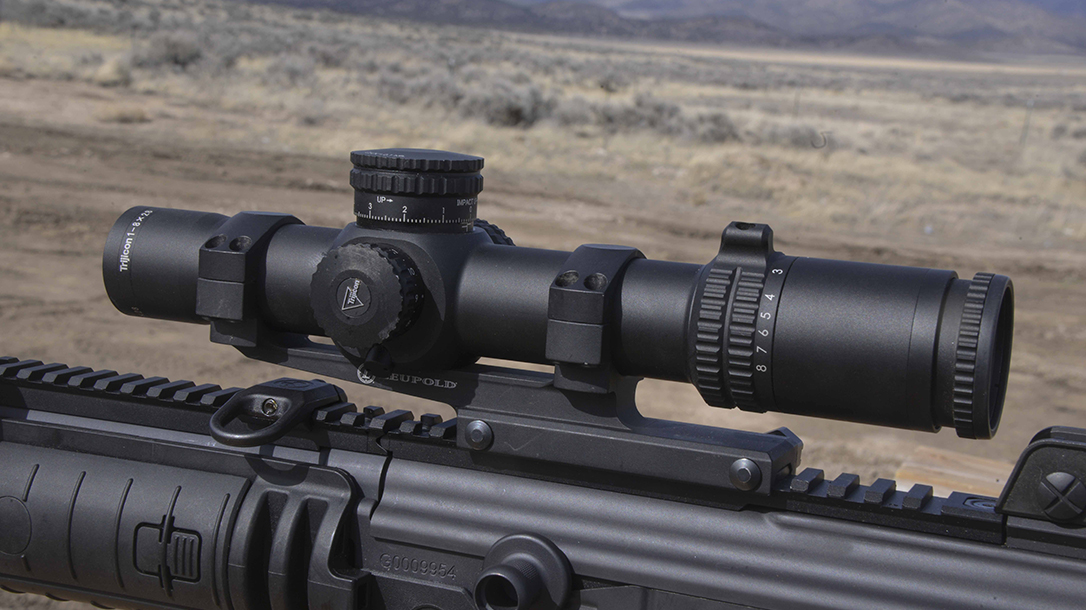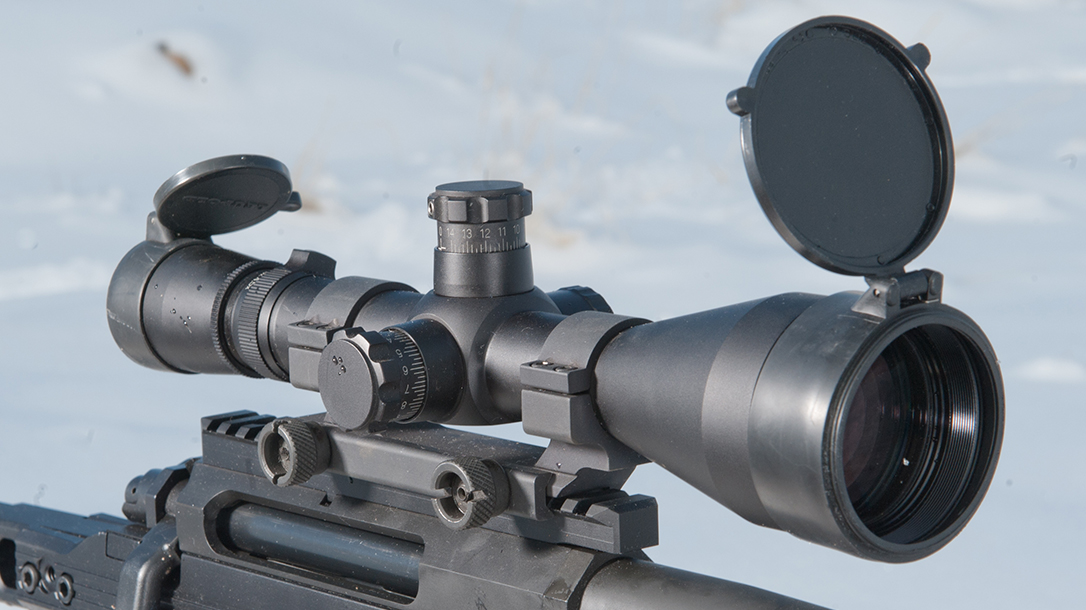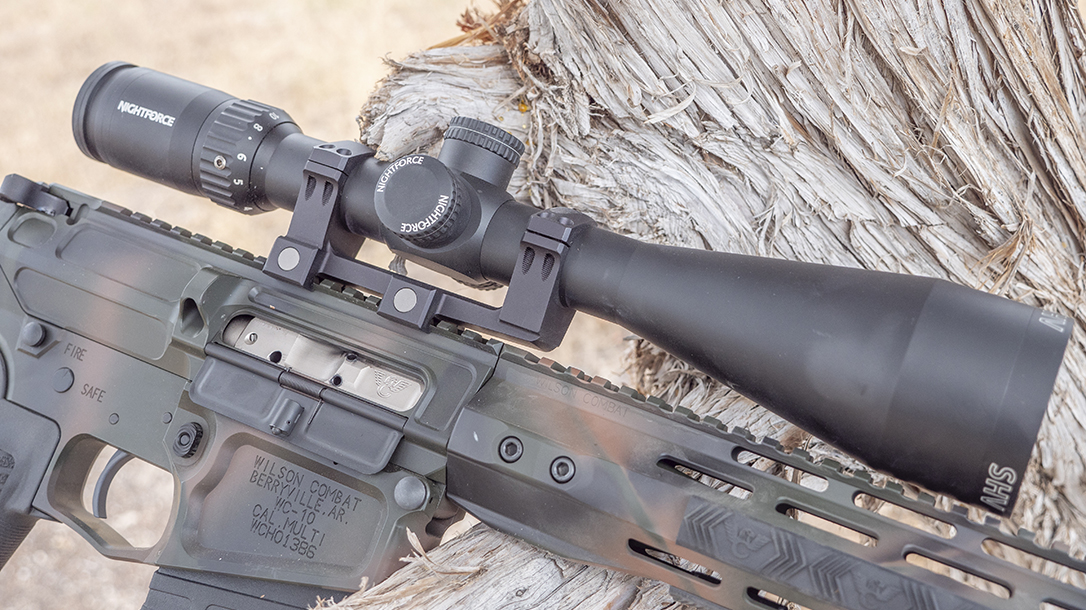Times have changed, especially with riflescopes. Everything today is almost completely reversed from when I started in the precision rifle world.
Fixed power scopes are rare to non-existent. First focal plane scopes are the norm. Second focal plane is a “specialty” scope. Dots and footballs are gone, replaced by lines, numbers and specialty reticles abound. MOA (Minutes of Angle) is still out there, but mils (milliradians) are the thing.
Advertisement — Continue Reading Below
Instead of a list, you need a playbook to see what you need. The two most common questions I get are: “How do I pick a scope, and what’s the difference?”
Keeping it simple, I came up with a four-category system that cuts through the marketing and provides a solid start.
Riflescopes Are All About the Glass
It was the early 1990s when I had the occasion to talk to John Williams Sr., founder of U.S Optics. Having just purchased one of his [used] scopes for my duty rifle, it needed some work. He all but rebuilt it for free in less than one week. Talking to him regularly taught me more about optics and rifle scopes than any single person needed to know.
Advertisement — Continue Reading Below
One of the things he told me is true to this day: Most of the cost and capability in a scope is in the glass. Coatings can help, especially today, but only so much. Building the best glass is labor intensive, anything but easy and remains available from few places. If you want the best glass, you will pay for it, no matter who builds it or where it comes from.
At the time, Japan was just starting to make quality optics glass. Germany, Austria and the Swiss ruled that world and scope prices reflected it. Today the Japanese glass rivals most European product. Even China has improved; once considered junk many quality scopes are starting to come from there.
However, if you needed what the highest quality glass offered in a scope, spotter, binoculars and even cameras, you paid the piper and that has not changed. At least 80 percent — some will say more — of a scope’s cost, not to mention the weight, is based on the quality of the glass.
Advertisement — Continue Reading Below
Mostly a Glass Holder
The rest of the scope houses the glass and the parts that make it work. You get what you pay for in terms of precision, repeatability and reliability, but it’s mostly a housing. Features can be different, but they all do pretty much the same thing. It’s really more about how well they do it.
Precision is simple: What shows on the dial matches on target. Dial up and over 5 inches at 100 yards, put lead to target and it should be exactly that (or close) on paper. Holding the same number using your reticle should yield the same results. The more precise a scope is, the more it tends to cost.
Repeatability is the ability to do the same thing over and over again with the same result. When you dial up five mils the first time, it’s the same every time. Every five mils after the first are the same until you run out. If it’s a FFP scope, that five mils is the same on every power and the reticle matches.
Advertisement — Continue Reading Below
Reliability is how long it will remain repeatable over the long term and in harsh conditions; this is where the money is.
Most anything will work on a bench. But will it work after being dragged in the mud and muck, or dropped out of the trunk or back of the truck? Does it work at 110 degrees, and 10-below zero? Can you count on it to do the exactsame thing it did before under any condition the scope, rifle and shooter can withstand? Everything else is about usability (what people want) and marketing.
Advertisement — Continue Reading Below
What’s the Difference Between Riflescopes and How Do I Tell?
At the extremes, it’s pretty easy to tell the difference. In between is a bit more difficult, but the simplest way remains cost. The glass and build quality of the housing ultimately determine cost and margins are tighter than you think. Brand in the middle is less critical, especially since the same companies in Japan or China make 90 percent of them.
While there are deals out there, the bottom line remains simple: you get what you pay for. In keeping with my usual move toward simplicity, I have broken scopes down into four categories.
Replica Riflescopes
The first category is “replica” scopes. They are exactly what they sound like. In much of the world, firearms are banned; the only thing people can use are pellet guns, generally Airsoft. Japan is generally recognized as the innovator in this arena since firearms are banned there. It later spread to China, the rest of Asia and ultimately the world. Airsoft in the U.S. is mostly paintball with a more realistic looking BB gun.
Advertisement — Continue Reading Below
In Asia, it rivals serious military training. A friend of mine taught a “subgun” class in Hong Kong years ago where they had helicopter insertions into a terrorist camp with role players as a final exercise. Guns are truly replicas. They are amazingly accurate and it is a serious business.
It has spawned a huge market for replica scopes. They look like real scopes but are not. Many are the same size as a 5-15 power, but have lower power given the range of the BB gun.
Most cost less than $100. A few cost more and therein lies the problem. I have seen these on real guns and they are not usable. They may work, once, twice, maybe not, but they should never be used on a self-defense or duty firearm.
Advertisement — Continue Reading Below
It’s the same with red dots. Replicas are just that with cheap glass or plastic lenses, pot metal controls and held together with glue. They are toys, designed to go on toys and should never be used as anything but a toy.
Usable Riflescopes
“Usable” scopes are those capable of safe use on self-defense, hunting, and even some deployment rifles. Most are made in Japan, Asia or the Philippines and cost anywhere from $200 to $800. Pretty much every manufacture has them, including Burris, Leupold, Nikon, and Bushnell.
Like everything else, you get what you pay for, so the higher end typically has better lens coatings and more repeatable and reliable controls. Most at the higher end will hold up to repeated use some are excellent. At the lower end of this category it’s a bit more sketchy. Some use them for years, others go through several in that same year.
Advertisement — Continue Reading Below
Hunting scopes in this range may be the most popular, often part of a “package” with the more affordable hunting rifles. Scopes at the higher range of this category are also the base line for some duty rifles.
Clear Riflescopes
Scopes I consider “clear” comprise the most popular and increasingly available category. Starting in the $750 range going up to $2,000, they are amongst the best buys in the market today. Most are made in Japan at a couple of the same factories, meaning the glass is the same. Differences lie in coatings and the housing specs or features.
At the upper end, the glass is excellent — better than most will ever need. Clarity is excellent and reticles are usable with some of the most popular available. Controls tend to be stronger, more precise, repeatable and reliable.
Leupold’s VX line is a perfect example of “clear.” Starting with the VX-R, you get a ton of scope for the money. Move to the VX-3 line and you get a feature-rich riflescope with excellent glass. At the top of this category is the VX5 HD, suitable for most any hunting, sporting or duty application.
Nightforce’s NSX line is at the top of this category offering some of the best scopes out there in this price range. Steiner’s hunting series is another excellent choice, as are the Bushnell Forge and some of the Elite Tactical line. Something in this line will satisfy the needs of most shooters, no matter the task, and is the fastest-growing segment of riflescopes today.
Clearest Riflescopes
The “clearest” scopes represent the pinnacle of optics clarity. They start at a little more than $2,000 and can reach well beyond $4,000. At the low-to-middle end are the best scopes using Japanese glass like the Nightforce ATACR, Steiner M-Series, Bushnell Elite Pro and Leupold Mark 5HD line. Schmidt Bender, Hensoldt, Zeis and the Leupold Mark 8 are at the very top end.
Most use the best glass available today, housings are strong, while dials and internals are precise and repeatable. Many are built to military standards, making them impervious to the elements and most abuse.
Whether it’s a hunting scope for that trophy hunt of a lifetime or a necessary tactical scope, they are the best you can get. The trick is not whether they are at the top of the game, but whether you really need what they offer.
Bottom Line on Riflescopes
Deciding which category you need starts with clearly understanding what you will do. Very few “need” the top-end “clearest” riflescopes, as most won’t be able to see the difference between them and many of the “clear” scopes.
Again, you get what you pay for, but there is no reason to pay for what you don’t need or can’t use. There is nothing wrong with spending money on optics. In fact, it fits nicely into that old adage “buy once cry once,” but don’t get sucked into the sales pitch. The vast majority of users, probably 99 percent will find what they need in either the “usable” or “clear” category.
Above all, take your time. If possible, look through the scope you want outside the store. Much of the marketing will not translate to the range or field. Coatings can change how they work in low light, dawn, dusk or bright sunlight and are often proprietary. Take the time to get what fits your needs, spending only as much as you need.
Great glass makes a big difference, but money spent on ammunition, training, and practice may trump any advantage. Take the time to choose wisely!
